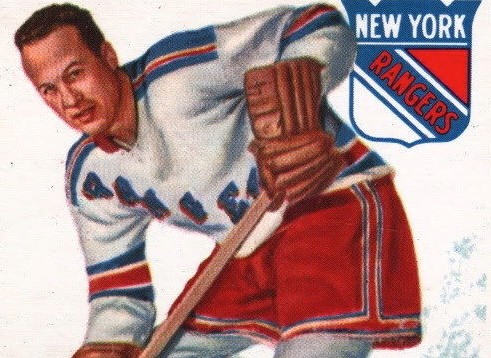Even in the professional sport’s early years, star players could earn salaries that tripled what the average American worker earned. As earning potential picked up among professional hockey stars over the next century, the best-paid players in the National Hockey League (NHL) were earning hundreds of times what the average American family made in a year.
Between the 1960s and 2019, the difference between the salaries awarded to the top players in the NHL saw an 800-fold increase. If you go back even farther, the difference between top hockey player salaries in the early 1900s and those awarded in 2019 amounts to an 8,000-fold increase.
To put those numbers in perspective, the Consumer Price Index (CPI), the most commonly used measure of inflation, saw an 8-fold increase between 1960 and 2020. The growth of top hockey player salaries increased by 100 times the inflation rate that applied to consumer goods between 1960 and 2020.
How did professional hockey players go from being well-paid “regular people” to earning average salaries in the millions and, for the best-paid players, upwards of $10,000,000 per year? The story spreads out over the course of more than a century of salary data—even predating the NHL itself—and includes periods of rapid growth interspersed with periods of plateauing pay rates.
[To learn more about inflation, jump to our article about how inflation is impacting everyday consumers.]
A Note About Historical Salary Data
Generally, NHL salary information became public starting with the 1989-1990 hockey season. Salary data predating the 1989-1990 season is considered “prehistoric,” HockeyZonePlus reported, and as such is somewhat limited.
All salary data presented here is expressed in U.S. dollars unadjusted for inflation unless otherwise noted. To accomplish this, historical exchange rates and converter tools have been used where needed. For example, data originally expressed in Canadian dollars between 1914 and 1926 has been converted based on exchange rates as recorded in a historical report from the Bank of Canada.
Historical data on earnings for the average American worker or family, too, is limited, especially going back more than half a century. As such, data presented here includes both average and median figures, depending on availability, and is drawn from the most credible sources available, including the Internal Revenue Service, the United States Census Bureau, and other publications.
To simplify data trends, the salaries highlighted in this article are generally from hockey players playing for the National Hockey League (NHL) and exclude salaries awarded by other major, minor, and amateur league teams.
[Get a deeper look at salary inflation across all professional sports.]
Early Professional Hockey Player Salaries
Today, we consider the National Hockey League to be synonymous with professional ice hockey, but pro players in this sport actually predate this North American league. The NHL’s inaugural season took place from 1917 through 1918. Before that season, players in the United States and Canada (and other parts of the world) played for pay for teams in the International Professional Hockey League, the National Hockey Association, and the Canadian Hockey Association.
Pro Hockey Salaries in the First Decade of the 1900s
One of the earliest pro hockey players for whom salary data is available is Hod Stuart, a star player for the International Professional Hockey League’s Calumer Miners team. Stuart is reported to have earned $1,800 playing during the 1904 through 1905 season, but there’s a caveat. Although he was widely considered the best professional hockey player at the time, it wasn’t solely for his skills on the rink that Stuart earned this pay. He also served as the manager of the team’s hockey rink.
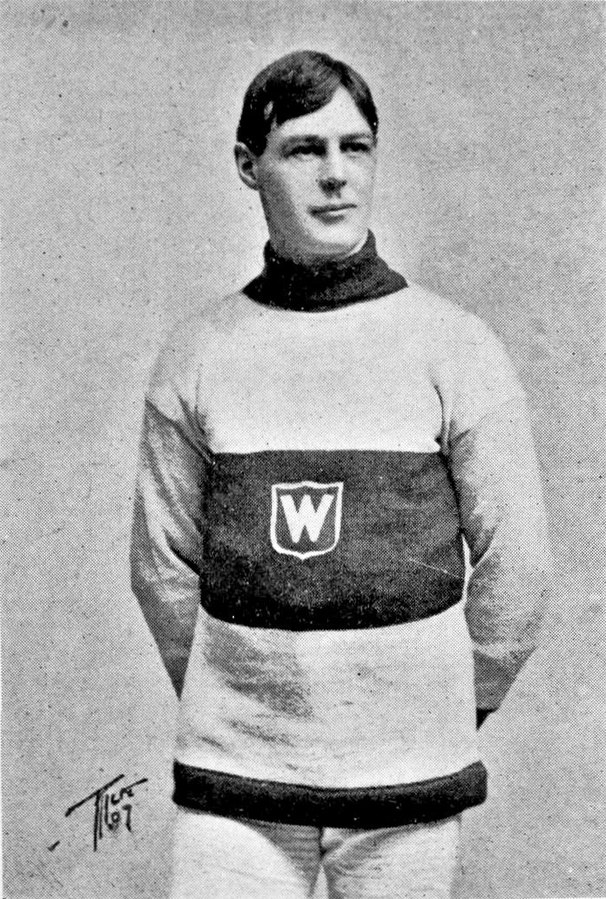
IMAGE SOURCE: Unknown author, Wikimedia Commons, public domain
Even though he had to wear multiple hats, Stuart’s earnings were, for the time, fairly lucrative. The average annual income across all industries was just $438 per year, according to the United States Embassy, putting Stuart’s earnings at more than 4 times that of the average American worker. Still, highly-trained and skilled workers at the time could expect to earn similar, if not higher, wages. According to a ranking of 100 occupations in a 1903 encyclopedia of American workers published by the University of Michigan Libraries, physicians and engineers made an average pay of $1,050; teachers made $1,150; lawyers made $1,200; electricians made $1,550; bankers made $1,600; and surgeons made $1,625.
It’s difficult to imagine that there was a time when people in “regular” (albeit skilled and often licensed) jobs made nearly as much as a pro hockey player—especially today, when top-performing players are bringing home eight-figure annual salaries—but that was the reality in the early 1900s.
The $5,250 paid to Fred Taylor for the 1909 through 1910 season made him the “best-paid athlete in the world” as measured on a per-game basis, according to HockeyZonePlus. Other highly paid professional hockey players that year, brothers Lester Patrick and Frank Patrick, reported earning $3,000 and $2,000, respectively, playing for the National Hockey Association’s Renfrew Creamery Kings team. Art Ross earned $2,700—his career-best salary—playing for the National Hockey Association’s Haileybury Comets team for the 1909-1910 season. Didier Pitre earned $1,700 that season playing for the National Hockey Association’s Montreal Canadiens.
Meanwhile, players for the American Amateur Hockey League, like brothers and New York Wanderers teammates Odie Cleghorn (right winger) and Sprague Cleghorn (defenseman), were reported to have earned $50 per week for the 1909 through 1910 hockey season.
With the average income across all occupations climbing to $574 per year as of 1910, Taylor’s one-season earnings amounted to more than 9 times the average American worker’s income, and even Didier’s more modest professional hockey star salary was nearly 3 times what the average worker earned.
[Jump to our focus on salary inflation in professional football.]
Salaries Plateau During the 1910s (But Not for Long)
The 1910s weren’t a particularly lucrative decade for professional hockey players. The limited salary data reported during this time is, generally, less impressive than the highest salaries reported during the previous decade.
Ottawa Senators center Frank Nighbor earned a $1,500 salary playing for the 1915 through 1916 season. Newsy Lalonde, who played for the NHL’s Montreal Canadiens, reported a salary of $1,300 for the 1917 through 1918 season.
Lalonde’s salary for the 1917 through 1918 hockey season was close to the average earnings for an American worker, as reported by the Journal of Political Economy—but less than the $1,518 average household income recorded for 1918, according to U.S. News & World Report.
Professional Hockey Salaries Multiply Throughout the Roaring ‘20s
Thanks to a significant dip in the exchange rate, the $1,800 in Canadian currency that Newsy Lalonde earned for the 1920 through 1921 and 1921 through 1922 hockey seasons amounted to around $1,566 in U.S. currency. However, throughout the early 1920s, Newsy Ladlone’s earning potential would more than triple from what he had earned just half a decade earlier. For the 1922 through 1923 hockey season, Lalonde reported a salary of around $4,500 (in both U.S. and Canadian currency, due to rebounding average conversion rates for that year). His earnings that year surpassed the $3,269.40 average net income the Internal Revenue Service (IRS) reported for 1920 by more than 35%.
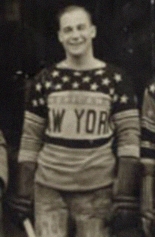
IMAGE SOURCE: New_York_Americans_1929.jpg (Original uploader Ary29 at it.wikipedia)
Wikimedia Commons, public domain
The second half of the 20s brought even bigger salary gains for top NHL players. Pittsburgh Pirates defenseman Lionel Conacher earned $7,500 (in U.S. currency) per year for the three seasons that took place between 1925 and 1928 as part of a $22,500 contract that, at the time, made him the highest-paid player in the NHL based on the overall contract amount. However, New York Americals center Billy Burch then scored an even bigger contract, $25,000 over three years, that would award him $8,333 (in U.S. currency) per year for the hockey seasons occurring between 1925 and 1928.
These one-season salaries outstripped the average household income considerably. The IRS reported an average household net income of $5,249.16 for 1925, according to the Federal Reserve Bank of St. Louis. Conacher was earning upwards of 40% more than the average family in America, while Burch made nearly 60% more than the average household.
During the 1928 through 1929 hockey season, right winger Jimmy Ward earned a total of around $16,660 in U.S. currency ($17,000 in Canadian currency) in salary and bonuses playing for the Montreal Maroons. That’s 2.7 times the $6,132.22 average household net income the IRS reported for 1929. Boston Bruins defenseman Eddie Shore’s stunning $25,000 salary for the 1928 through 1929 hockey season amounted to more than 4 times the average household net income reported by the IRS.
The average incomes reported by the IRS at this time—and based on the income tax returns filed that year—present a perception of prosperity that, experts say, is largely an “illusion.” Although the income considered necessary for supporting a family in 1929 was $2,500—less than half of the average household net income in 1925—Digital History (a website presented by the University of Houston) noted that more than 60% of Americans earned under $2,000 per year. For example, the Gilder Lehrman Institute of American History reported the average annual earnings for Americans in 1924 as $1,303, a far cry from what the IRS reported as the average net income.
To the majority of Americans, Conacher, Burch, and Ward’s salaries in the mid- to late-1920s would have seemed lucrative, indeed.
[Jump to our focus on salary inflation in professional baseball.]
Early High Salaries Give Way to Late Lows Through the 1930s
Players who reported solid earnings in the 1920s achieved more dazzling success earnings-wise in the 1930s. For example, Ottawa Senators center Frank Boucher was only earning $3,500 during the 1925 through 1926 season but saw his earnings increase to $5,800 and then $6,000 per year during the mid-1930s. During the 1931 through 1932 hockey season, Montreal Canadiens center Howie Morenz reported earning around $8,300 in U.S. currency ($10,000 in Canadian currency, due to a significant drop in the exchange rate at that time), far surpassing his $5,500 salary from the 1926 through 1927 season.
Ottawa Senators defenseman and captain Francis King Clancy reported earning around $7,546 in U.S. currency ($7,700 in Canadian currency) for the 1929 through 1930 season, with his earnings climbing to around $10,000 (in both U.S. and Canadian currency) for the 1930 through 1931 season. Toronto Maple Leafs right winger Charlie Conacher, too, earned $10,000 for the 1931 through 1932 hockey season. So did Eddie Shore, although for him, a $10,000 season represented a considerable pay cut from his $25,000 salary for the 1928 through 1929 season.
That said, the earning potential of star hockey players waned as the rest of this Great Depression-era decade wore on. Eddie Shore’s salary dipped again to $7,000 during the 1938 through 1939 season. In that same year, Detroit Red Wings left winger Herbie Lewis earned $8,000, which represented his career-high salary, in what was his final season playing professional hockey.
How do these ‘30s professional hockey salaries compare to the earnings of the average American family? The average net income amount reported by the IRS for 1931 was $4,217.40, according to the Federal Reserve Bank of St. Louis. The $10,000 salaries for star hockey players during this time amounted to more than twice the average net income in America.
By the end of the decade, median household income data was available from the United States Census Bureau. The median family wage or salary income reported by the Census Bureau in 1939 was only $1,226. Eddie Shore’s salary that year amounted to more than 5.7 times the median family income, and the $8,000 salary reported by Herbie Lewis amounted to more than 6.5 times the median family income.
Top NHL Salaries Grow From a Few Thousand to $10,000 Per Season Through the 1940s
Professional hockey salaries wouldn’t bounce back to their pre-Great Depression-era figures during the 1940s. Salaries reported among hockey stars during this decade commonly hovered in the $4,000, $5,000, and $6,000 range, at least until later in the decade. For example, Toronto Maple Leafs defenseman Garth Boesch earned a salary of $3,964 in U.S. currency ($4,400 in Canadian currency) for the 1945 through 1946 season. He would then earn an estimated salary of $5,500 for the 1946 through 1947 season and $6,000 for the 1947 through 1948 season. Roy Conacher, left winger for the Detroit Red Wings, would earn $7,000 in U.S. currency for the 1946 through 1947 season.
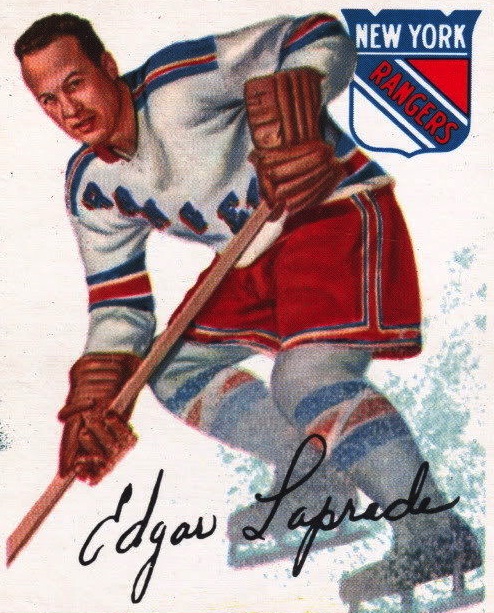
IMAGE SOURCE: TGC Topps Gum Cards, Wikimedia Commons, public domain
Gordie Howe saw his salary as right winger for the Detroit Red Wings climb steadily throughout the 1940s. In his rookie year—the 1945 through 1946 season—Howe earned just $2,700 in U.S. currency. His pay would rise to $5,000 for the 1946 through 1947 season, $6,000 for the 1947 through 1948 season, $7,000 for the 1948 through 1949 season, and $8,000 for the 1949 through 1950 season.
Edgar Laprade, New York Rangers center, was an exception to salary trends for the mid-1940s. Laprade started his rookie season in 1945 with a two-year contract that amounted to $15,000 in salary plus a $5,000 signing bonus. His reported earnings for the 1945 through 1946 season added up to $12,500.
Later in the decade, the top-performing pro hockey players began earning somewhat more.
For the three seasons between 1947 and 1950, Ted Kennedy, center and assistant captain for the Toronto Maple Leafs, earned $8,000 in Canadian currency—equivalent to $8,000 in U.S. currency the first two years and $7,208 in U.S. currency the third year, due to fluctuating exchange rates. Defenseman Doug Harvey reported a $7,500 salary playing for the Montreal Canadiens during the 1948 through 1949 season.
For the 1949 through 1950 season, Toronto Maple Leafs defenseman Bill Barilko earned $7,208 in U.S. currency ($8,000 in Canadian currency). Following several seasons in the $5,000 to $6,000 (in U.S. currency) salary range, Maurice Richard’s earnings for 1948 to 1949 and 1949 to 1950 seasons amounted to $10,000 (in both forms of currency) and $9,911 in U.S. currency ($11,000 in Canadian currency), respectively.
To put these numbers in perspective, the median income of non-farm families and individuals in 1945 was $2,595, according to the Census Bureau. Edgar Laprade’s $12,500 earnings amounted to 4.8 times the median family income, and even Garth Boesch’s $3,964 salary amounted to 1.5 times the median family income. The median family income the Census Bureau reported for 1949 was $3,100, which put Maurice Richard’s $10,000 salary at more than 3 times the median family income.
[Jump to our focus on salary inflation in professional basketball.]
Pro Hockey Earnings in the $10,000s, $20,000s, and Beyond Through the 1950s
The 1950s saw top hockey player salaries double (and in some cases, more than double) compared to where they were in previous years.
Among the established pro hockey players for whom the ‘50s was a good decade, salary-wise, were Gordie Howe and Maurice Richard. Howe started the decade earning $9,000 per season but reported earnings of $28,000—consisting of a base salary of $20,000 and $8,000 in bonuses—for the 1957 through 1958 hockey season. Richard was earning $14,146 in U.S. currency ($15,700 in Canadian currency) as of the 1950 through 1951 season but would be making $20,860 in U.S. currency ($20,000 in Canadian currency) for the 1957 through 1958 season.
On top of his more than $21,000 per season base salary for playing for the Montreal Canadiens during the 1953 through 1954 season, center Jean Beliveau also earned bonuses as a player amounting to more than $10,000 plus a $10,000 salary he earned for performing public relations job duties for the team’s owner, Molson’s Brewery.
While the top-paid NHL players were nearing or surpassing the $20,000 salary mark, a greater number of pro hockey players broke the $10,000 and $15,000 barriers during this decade. For example, George Armstrong, right winger for the Toronto Maple Leafs, reported earnings of $8,136 in U.S. currency ($8,000 in Canadian currency) for the 1953 through 1954 season. By the 1957 through 1958 season, Armstrong was earning $11,995 in U.S. currency ($11,500 in Canadian currency, including a $10,500 salary and a $1,000 bonus for serving as the team’s captain).
Toronto Maple Leafs center Ron Steward reported earnings of $10,430 in U.S. currency ($10,000 in Canadian currency) for the 1957 through 1958 season, while left winger Dick Duff reported earning $11,473 in U.S. currency ($11,000 in Canadian currency). New York Rangers defenseman Bill Gadsby reported earning $14,500 in U.S. currency—a $14,000 base salary plus a $500 bonus—that same season.
Camille Henry, center for the New York Rangers, earned $15,000 in U.S. currency for the 1954 through 1955 season. Montreal Canadiens goalie Jacques Plante reported earnings of $11,154 in U.S. currency ($11,000 in Canadian currency) for the 1955 through 1956 season but was making $18,774 in U.S. currency ($18,000 in Canadian currency) by the 1959 through 1960 season. During the 1955 through 1956 hockey season, his final season playing defenseman for the Montreal Canadiens, Emile Bouchard commanded a salary of $18,252 in U.S. currency ($18,000 in Canadian currency).
While pro hockey player salaries of the 1950s were taking off compared to those of previous years, they were really soaring compared to what the average American family was earning. In 1954, when Beliveau was earning more than $21,000 in base salary alone, the median family income reported by the Census Bureau was $4,200—just one-fifth of what Beliveau was earning.
Maurice Richard’s $20,860 salary for the 1957 to 1958 NHL season amounted to more than 4 times the $5,100 median family income the Census Bureau reported for 1958.
Top NFL Salaries Double or Even Triple During the 1960s
In many ways, the 1960s provided the first glimpse of the trajectory that the highest hockey salaries would follow through today. Top salaries of $20,000 from the 1950s would instead climb to the $40,000s, $50,000s, $60,000s, and beyond in the ‘60s.
Longtime NHL player Doug Harvey saw his earning potential peak in the 1960s. Between 1959 and 1964, Harvey consistently earned salaries in the mid- to high-$20,000 range, maxing out at $27,500 or, according to some reports, $30,000. Some of these salaries were awarded in the dual position of player and coach, while others were awarded for playing duties only.
Toronto Maple Leafs defenseman Carl Brewer reported earning $32,445 in U.S. currency ($35,000 in Canadian currency) during the 1964 through 1965 season.
During the 1966 through 1967 season, Toronto Maple Leafs defenseman Marcel Pronovost earned a total of $43,616 in U.S. currency ($47,000 in Canadian currency, including a $32,000 base salary and a $15,000 bonus awarded upon winning the Stanley Cup). Henri Richard, center for the Montreal Canadiens, earned salaries in the low- to mid-$20,000s throughout most of the 1960s but reported earnings of $44,592 in U.S. currency ($48,000 in Canadian currency) for the 1969 through 1970 hockey season.
Toward the end of the ‘60s, defenseman Bobby Orr was earning $50,000—by some accounts, up to $65,000—playing for the Boston Bruins. Toronto Maple Leafs center Norm Ullman reported earnings of $52,953 in U.S. currency ($57,000 in Canadian currency) for the 1969 through 1970 hockey season. Detroit Red Wings left winger Frank Mahovlich closed out the decade with $53,400 in earnings (in U.S. currency) for the 1969 through 1970 season, including a salary of $45,000 plus numerous performance-based bonuses.
After earning $23,000 for the 1966 through 1967 season playing for the Chicago Black Hawks, goalie Glenn Hall’s salary climbed to $50,000 for the 1968 through 1969 season and $57,500 for the 1960 through 1970 season, during which he played for the St. Louis Blues.
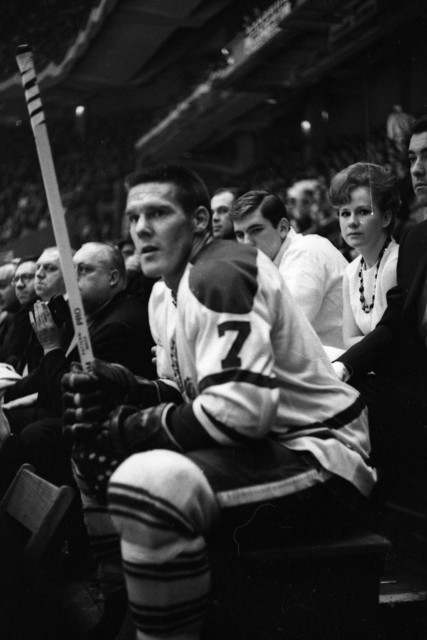
IMAGE SOURCE: Arnie Lee (Arnielee), Wikimedia Commons, Creative Commons Attribution 3.0 Unported license
Following five years of $20,000 per season (in U.S. currency) salaries, Chicago Blackhawks left winger Bobby Hull earned $35,000 during the 1965 through 1966 season. Some sources have reported that Hull became the first-ever NHL player to earn $100,000 during the 1968 through 1969 season, although other sources list his earnings as $60,000.
More modest earnings earlier in the decade gave way to higher income at the close of the 1960s for Toronto Maple Leafs defenseman Tim Horton. Horton achieved earnings of $44,544 in U.S. currency ($48,000 in Canadian currency, including a $45,000 base salary and numerous performance-based bonuses). The 1969 through 1970 NHL season saw Horton earn $78,036 in U.S. currency ($84,000 in Canadian currency).
Marcel Pronovost’s $43,616 in 1966 amounted to nearly 6 times the $7,400 median family income the Census Bureau reported for that year. In 1969, the Census Bureau reported a median family income of $9,400. That puts Tim Horton’s $78,036 earnings at more than 8 times what the middle-income family could expect to make and Bobby Hull’s rumored $100,000 earnings at 10.6 times the median family income.
[Jump to our look salary inflation in professional soccer.]
Top NHL Salaries Soar From $100,000 to $600,00 in the 1970s
The 1970s propelled the top pro hockey salaries into the six-figure range, and it didn’t take long for star players to cross the $200,000 per season threshold. By the end of the decade, top NHL players were earning $400,000, $500,000, and even $600,000 incomes per season.
By the 1972 through 1973 season, left winger Vic Hadfield and defenseman Brad Park, both of the New York Rangers, were earning $200,000 per season.
The 1975 to 1976 NHL season saw Los Angeles Kings center Marcel Dionne achieve earnings of $300,000, while New York Islanders center Bryan Trottier earned $585,000—most of it in the form of a $500,000 signing bonus. Bobby Orr, now playing for the Chicago Blackhawks, reported earning $500,000 for the 1976 through 1977 season.
Former World Hockey Association star Anders Hedberg reported earning $600,000 playing right winger for the NHL’s New York Rangers during the 1978 through 1979 and 1979 through 1980 hockey seasons. Ulf Nilsson, center, also earned $600,000 playing for the New York Rangers during these seasons.
The top salaries awarded to pro hockey players weren’t only growing at an unprecedented rate in the 1970s compared to the history of the sport. They were also outpacing the earnings of “regular” Americans by a stunning rate. Hadfield and Park’s $200,000 earnings amounted to more than 17 times the $11,120 median family income the Census Bureau reported for 1972. Trottier’s $585,000 earnings amounted to 42 times the $13,720 median family income reported by the Census Bureau for 1975, and Hedberg and Nilsson’s $600,000 earnings at the end of the decade amounted to nearly 40 times the Census Bureau’s reported median family income, $15,060, for 1978.
The First Million (and Two Million) Dollar Salaries Emerge in the 1980s
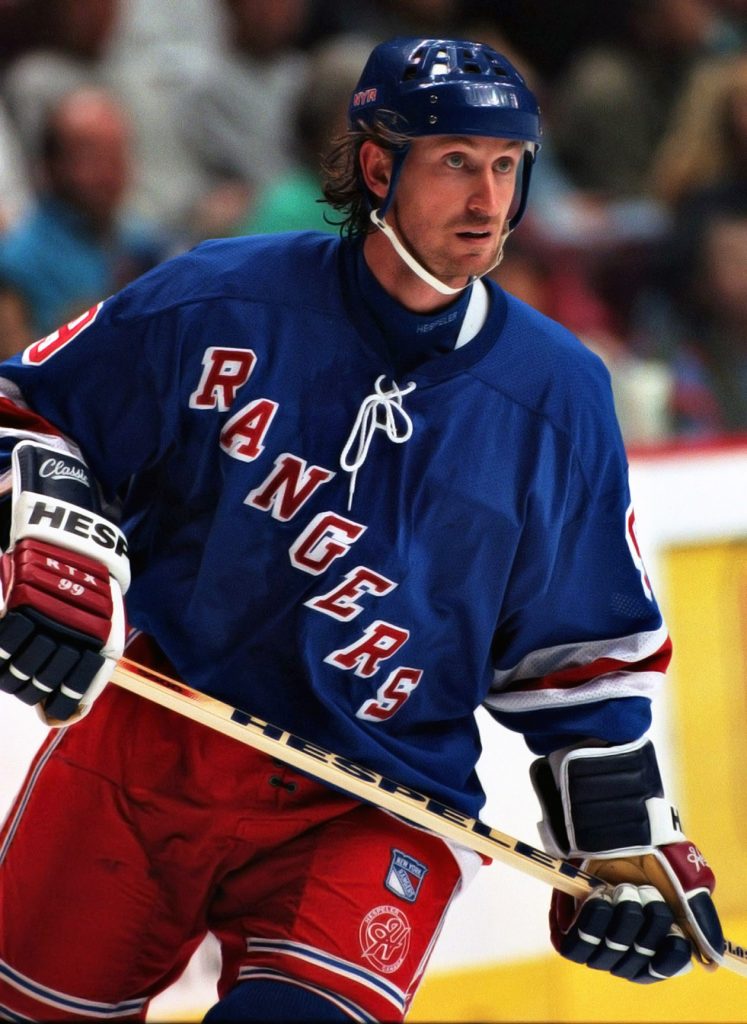
IMAGE SOURCE: Hakandahlstrom and IrisKawling, Wikimedia Commons, Creative Commons Attribution-Share Alike 3.0 Unported license
The salaries of top NHL players kept climbing. Through the early ‘80s, more and more players were joining the $300,000 per season club. Mark Howe made $325,000 playing defenseman for the Philadelphia Flyers in 1982, while center Bobby Smith of the Minnesota North Stars reported earnings of $350,000. Under a seven-year, $3,200,000 contract, Los Angeles Kings right winger Dave Taylor reported earnings of $450,000 per season from 1981 through 1985.
The top-paid NHL players still outpaced the earnings of their peers. Between the 1981 through 1982 and 1985 through 1986 hockey seasons, Marcel Dionne reported earnings of $600,000, which would climb to $700,000 for the 1985 through 1986 season and $800,000 for the 1986 through 1987 season. The $825,000 in earnings that Edmonton Oilers center Wayne Gretzky reported for the 1984 through 1985 hockey season set the stage for his even more lucrative salaries later in the decade.
By the end of the decade, NHL players like Chris Chelios and Mark Messier were making close to a million dollars per season—$929,500 and $937,000, respectively. Naturally, the new contracts being awarded to the most coveted players in the league had to top these figures. As the ‘80s came to a close, two NHL superstars earned a record-breaking $2,000,000 per season. Wayne Gretzky became the first to cross this threshold during the1988 through 1989 hockey season. Mario Lemieux, who had been earning $550,000 per year since the 1986 through 1987 seasons, reported earnings of $2,000,000 during the 1989 through 1990 NHL season.
In 1982, when Marcel Dionne was earning $600,000 per year, he was making 25 times the $23,430 median family income the Census Bureau reported for the year. Gretzky’s $825,000 salary for the 1984 through 1985 season amounted to 31 times the $26,430 median family income reported by the Census Bureau for 1984. Gretzky and Lemieux’s $2,000,000 salaries at the end of the decade amounted to more than 69 times the median family income of $28,910 that the Census Bureau reported for 1989.
Multimillion-Dollar Salaries Stretch Into the Eight-Figure Range in the 1990s
The first hockey season of the 1990s marked a change in pay among the top NHL players. Until a couple of years earlier, no one was making more than a million dollars per season playing in the NHL. Just one year earlier, Lemieux and Gretzky had been the only players in the league earning over a million dollars. For the 1990 to 1991 season, however, all of the five most lucrative NHL contracts were above the million-dollar mark.
Gretzky led the first few years of the new decade with contracts worth $3,000,000, followed by Lemieux, earning in the $2,100,000 to $2,400,000 range. Eric Lindros, center for the Philadelphia Flyers, topped the league during the 1992 through 1993 and 1993 through 1994 seasons, with salaries of $3,500,000 and $3,350,000, respectively.
During the 1995 through 1996 NHL season, Gretzky doubled his salary from earlier in the decade to earn $6,540,000. Two other pro hockey players—Messier and Winnipeg Jets left winger Keith Tkachuk—also earned upwards of $6,000,000.
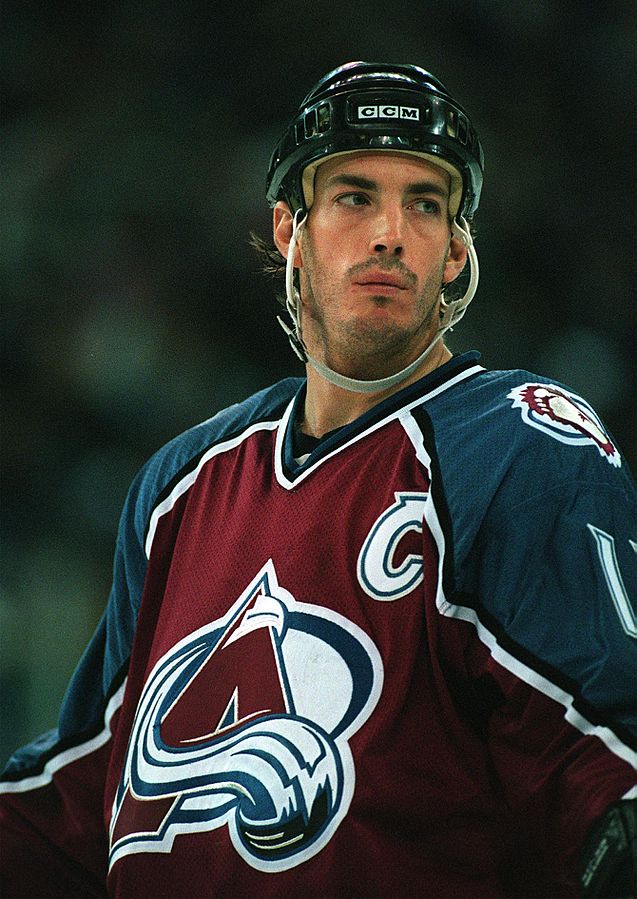
IMAGE SOURCE: Hakan Dahlstrom, Wikimedia Commons, Creative Commons Attribution-Share Alike 3.0 Unported license
The highest NHL salaries quickly grew from seven figures to eight figures. Lemieux reported earnings of $11,350,000 during the 1996 through 1997 hockey season. The following year, Joe Sakic, center for the Colorado Avalanche team, would report the single highest per-season contract of the decade: $16,450,000.
Sakic’s $16,450,000 contract from the 1997 through 1998 hockey season wasn’t just the highest-paying contract at the time—it remains the highest-paying contract awarded in the NHL to this day (as of 2022). Other top earners of the decade would include Detroit Red Wings center Sergei Fedorov, who reported a contract worth $14,500,000 for the 1998 through 1999 season, and right winger Jaromir Jagr of the Pittsburgh Penguins and left winger Paul Kariya of the Anaheim Ducks, who earned $11,700,000 and $11,000,000, respectively, during the 1999 through 2000 season.
Of course, earnings for the average American hadn’t kept up with the massive contracts awarded to the top-performing NHL stars of the time. In fact, the median income rate for American families dropped after 1989, and it took several years to reach that 1989 peak earnings amount again.
Gretzky’s $3,000,000 earnings amounted to 99 times the $30,126 median household income reported by the Census Bureau for 1991. For 1995, the Census Bureau reported a median family income of $34,076. Gretzky’s $6,540,000 for the 1995 through 1996 hockey season amounted to 191 times the average household’s income. Sakic’s $16,450,000 contract for the 1997 through 1998 NHL season amounted to 444 times the $37,005 median household income the Census Bureau reported for 1997.
Ups and Downs Characterize Pro Hockey Salary Growth in the 2000s
The 2000s were a volatile time for professional hockey salaries. Individual highest-paid NHL superstars saw their salaries decline over the first decade of the new millennium. A labor lockout led to the cancellation of the 2004 through 2005 NHL season. During the second half of the decade, a new salary cap imposed by the collective bargaining agreement that followed the lockout limited how much a team could spend and how much an individual player could earn.
By the 2002 through 2003 NHL season, all of the five top-paying contracts in the league paid $10,000,000 or more. Jaromir Jagr led the league with a contract worth $11,483,333, followed by Keith Tkachuk with an $11,000,000 contract. Although Jagr would still hold the title of the highest-paid NHL player in the two years following the 2004 through 2005 lockout and missed season, his contracts for these years would decline to $8,360,000.

IMAGE SOURCE: Michael Miller, Wikimedia Commons, Creative Commons Attribution-Share Alike 3.0 Unported license
For the rest of the decade, the highest-paying contracts in the NHL amounted to $10,000,000. Philadelphia Flyers center Daniel Briere, New York Rangers center Scott Gomez, and Buffalo Sabres left winger Thomas Vanek all reported contracts worth $10,000,000 for the 2007 through 2008 season. Ottowa Senators left winger Dany Heatley was the highest-paid player for the 2008 through 2009 NHL season, and Tampa Bay Lightning center Vincent Lecavalier was the highest-paid player for the 2009 through 2010 season.
When Jaromir Jagr received an $11,483,333 contract for the 2002 through 2003 hockey season, it amounted to 270 times the $42,409 median family income the Census Bureau reported for 2002. Despite the significant drop in earnings—more than $3,000,000—Jagr’s $8,360,000 contract for the 2006 through 2007 NHL season still amounted to 172 times the $48,451 median family income reported by the Census Bureau for 2006. The $10,000,000 contract Vincent Lecavalier earned for the 2009 through 2010 season amounted to 199 times the $50,046 median family income reported by the Census Bureau for 2009.
Top Hockey Player Salaries Trend Upward During the 2010s
Generally, the top salaries awarded to NHL players increased throughout the 2010s, though at a much more modest rate than they did between the 1960s and the 1990s.
Along with Vancouver Canucks goalie Roberto Luongo, Vincent Lecavalier again led the league for the 2010 through 2011 season, both with $10,000,000 contracts. Brad Richards, center for the New York Rangers, had the highest-paying contract for the 2011 through 2012 season, at $12,000,000. For the next several years, Shea Weber’s $14,000,000 contract for playing defenseman for the Nashville Predators would be the highest-paying contract in the league.
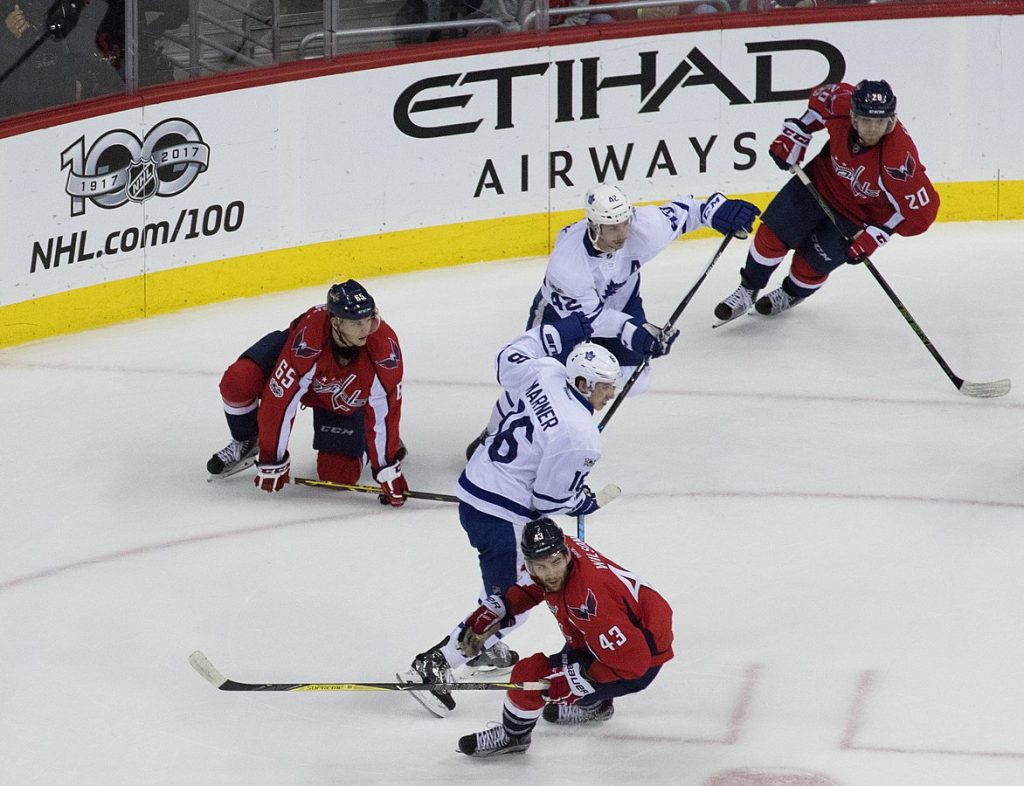
IMAGE SOURCE: David from Washington, DC, Wikimedia Commons, Creative Commons Attribution 2.0 Generic license
The highest-paying contract in the NHL for the 2018 through 2019 season was the $15,900,000 contract awarded to Toronto Maple Leafs center John Tavares. During the 2019 through 2020 season, Toronto Maple Leafs right winger Mitch Marner became the first NHL player in more than 20 years to earn $16,000,000 in a season.
The $12,000,000 contract awarded to Brad Richards for the 2011 through 2012 season amounted to 233 times the $51,371 median family income reported for 2012 by the Census Bureau. Shea Weber’s $14,000,000 contract amounted to 251 times the $55,775 2015 median family income reported by the Census Bureau. Although the highest-paying NHL salary increased, so did income for the average family. The $16,000,000 contract Mitch Marner enjoyed for the 2019 through 2020 hockey season amounted to 232 times the $68,703 the Census Bureau reported for 2019.
Top NHL Salaries Hover in the $13,000,000 to $16,000,000 Range in the 2020s (So Far)
Under the salary cap established for the first few years of the 2020s, an individual NHL player could earn more than $16,000,000. So far, however, no individual player has.

IMAGE SOURCE: Azadeh Kashani, Wikimedia Commons, Creative Commons Attribution-Share Alike 4.0 International license
Toronto Maple Leafs center Auston Matthews has been the closest. His $15,900,000 contract for the 2020 through 2021 NHL season wasn’t far below the $16,300,000 salary cap for individual players. The highest-paid player in the league for the 2021 through 2022 season was San Jose Sharks defenseman Erik Karlsson, but his contract was only worth $14,500,000.
Although the salary cap amount for individual players increased to $16,500,000 for the 2022 through 2023 season, the highest-paid player, Dallas Stars center Tyler Seguin, made only $13,000,000.
Although earnings of top NHL stars haven’t quite reached the peaks players enjoyed in the mid- to late-1990s, these players are still earning hundreds of times what the average American family is. The Census Bureau reported a median household income of $67,521 for 2020, putting Auston Matthews’ $15,900,000 at more than 235 times the median family income.
Inflation in Professional Hockey Franchise Operating Costs and Revenue
Revenues for the National Hockey League have grown significantly since the 1990s. Over the course of the 1993 through 1994 hockey season, the NHL brought in around $400,000,000 in revenue, according to Canadian news company The Globe and Mail, while the 2018 through 2019 season was expected to bring in $4,540,000,000 (yes, billion) in revenue. The league reported $18,000,000,000 in revenue in 2021 and was aiming for—and, experts believed, was on track to hit its goal of—bringing in $25,000,000,000 in league revenue by the year 2027.
Comparing Professional Hockey Players’ Salary Inflation to Other Sports
Ten million dollars a year is certainly nothing to scoff at, but it’s not difficult to notice that the contracts awarded to the highest-paid hockey players don’t come close to the salaries paid to superstars in baseball, basketball, or football.
Tyler Seguin’s $13,000,000 contract for the 2022 through 2023 hockey season pales in comparison to the 2022 earnings for superstars in other sports. Major League Baseball (MLB) player Max Scherzer had a contract for $43,333,333, and he was one of 14 players earning salaries of $30,000,000 or more, according to NBC. National Basketball Association (NBA) player Stephen Curry had a $45,780,966 contract for the 2021 through 2022 basketball season. National Football League (NFL) player Aaron Rodgers had a contract for $50,300,000, The Sporting News reported.
Why are the most lucrative contracts in the NHL only a fraction of what star players earn in the MLB, NBA, and NFL? The main reason is because of how these different sports leagues make their money. In general, professional sports teams and leagues make money primarily through sales of the broadcasting rights to air games on television and ticket sales for in-person attendance. Compared to the MLB, the NBA, and the NFL, the National Hockey League earns significantly less money from television broadcasting deals, according to Hockey Answered. Less revenue coming in means less funding available to offer mega-contracts, even to outstanding players. Additionally, league-wide salary caps on teams and individual players limit how much a team can choose to spend, even if they’re otherwise willing to part with more money.
Conclusion
Given the fluctuations in top NHL salaries in recent years and the modest growth in the value of the highest salaries awarded to players—that is, modest as compared to salary increases between the 1960s and the late 1990s or to the soaring salary inflation found in other major sports—it’s tough to say at what rate salaries will increase (or even decrease) for top-performing NHL players through the rest of the 2020s and beyond. Top player salaries for the sport have seen both periods of rapid growth and periods of slow growth and even slight declines.
Still, as long as the NHL remains popular—and make no mistake, it is popular—there’s little chance that the value of the contracts awarded to top-performing hockey players will suffer from any sharp declines. As a sport, hockey is seeing growth in popularity not only across the United States but across the world. As the popularity of the sport and the revenue of the league increase, the value of the contracts awarded to top players is, on the whole, also likely to increase—even if that increase isn’t always steady.
***
Athletes and sports teams might make a fortune. But what about the cities where they play? Find out how sports stadium construction impacts local economies.
